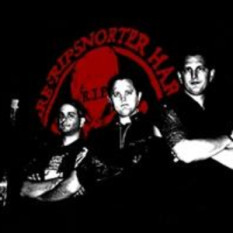The T-Virus is like any other virus. It is a protein crystal with an RNA core. As the crystal makes contact with a cell's membrane, it destroys it and inserts its RNA into the cell. The cell absorbs the viral genome into its own DNA, which takes over the cell's functions. The cell begins to produce offspring of the original virus. The new viruses are then released from the host cell and infect the neighboring cells, which starts the process all over again.
What the T-Virus does is kills any living mitochondria and replaces the dead ones with itself. The virus then combines with other cells to produce energy. The energy produced is just enough to power the motor neurons and the basic lower brain functions. Not only that, but this bypasses the entire circulatory system, which makes the heart and lungs redundant systems that can be disposed of.
However, the T-Virus can only properly function by consuming the cell in order to produce its energy and to divide via mitosis to spread around the body. This slow breakdown of cells leads to the necrotizing effects seen on most BOWs. The virus also incorporates itself into the host's RNA, which substantially alters it. This is why creatures, such as bees and spiders, only have very minor mutation, such as increased size, when compared to the human mutation caused by the virus. This is due to their lower stance in the evolutionary chain.
Should the human host be alive at the time of T-Virus infection, all higher brain functions are destroyed as the virus simply dissolves away the frontal lobes. This leaves only the telencephalon, better known as the cerebrum, to govern behavior. This leaves the infected host with a very animalistic behavior. As the virus spreads, it damages the hypothalamus. This produces a massive flood of neurotransmitters, enzymes, and hormones such as norepinephrine and dopamine. These effects, combined with the painful symptoms of the infection, induces a psychotic rage, persistent hunger, and increased aggressiveness in those infected.
Should the human host be dead at the time of infection, only enough energy is produced to power the lower brain functions. These functions are responsible for the most primal instincts, such as walking and eating.
In either case, their late-stage appearance and behavior are characteristics of their name-sake, that of the zombie.
Should a late-stage human host be rendered unconscious, the body will lay in a dormant phase appearing to be dead. In actuality the host is rapidly mutating due to the T-Virus becoming hyperactive. Within the timeframe of an hour, the decayed skeletal and muscular system is reconstructed into a stronger and more durable form, development can be seen of sharp canine teeth and razor claws, fresh blood seeps into remaining skin giving it a reddish hue, advances in decomposition, and intact eyes become a bright white. Umbrella researchers at the Arklay Laboratory have dubbed this stage as an V-ACT, commonly referred to as a Crimson Head. The brain is then jolted back to consciousness with a slight but important increase in intelligence, and large increase in agility and aggressiveness. As a consequence of this rapid mutation, cellular breakdown hits a critical point where the host cannot regenerate properly any longer and can effectively be killed permanently, given enough damage. .
All albums
You can find information through the best music search engine - Muzlan.top 😊All materials on request "T-Virus" are available on page T-Virus
Yes of course. You can listen tracks on the page T-Virus
Yes of course. You can download tracks on the page T-Virus
This page is found by queries: T-Virus mp3 download, T-Virus song download, T-Virus track minus, T-Virus all mp3, T-Virus flac



